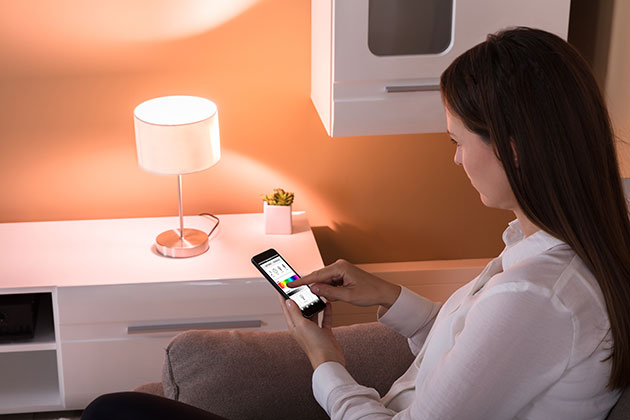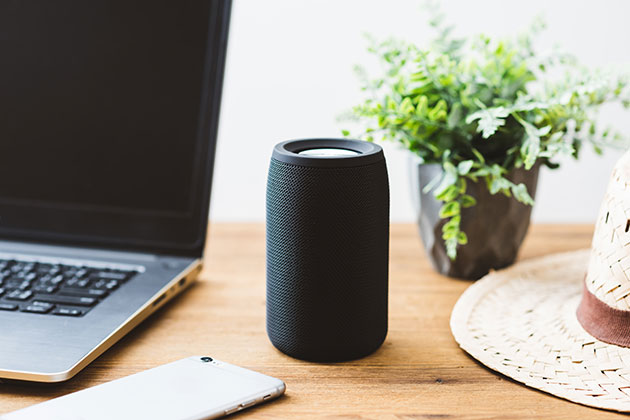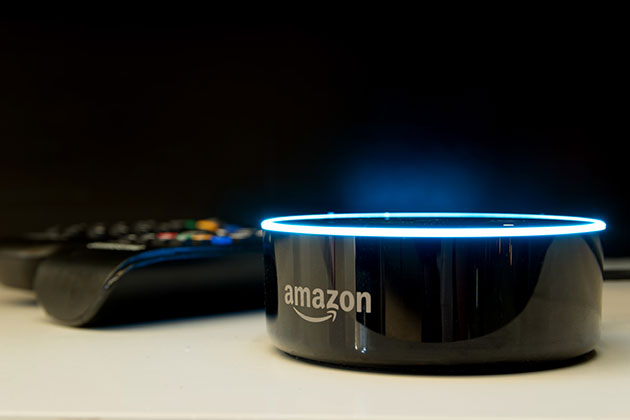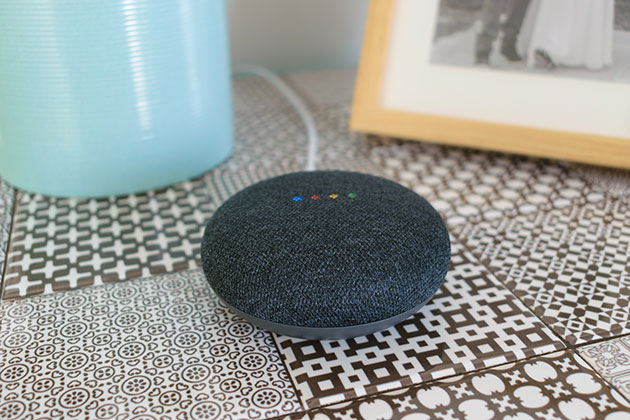9 March, 2022 By: Ruth Callaghan
Voice-controlled lighting, a fridge that tells you when you’re running low on milk, and a toothbrush that sends live video of the inside of your mouth to your phone - it’s all possible in a smart home.
In the past five years, the use of smart home technology has moved from gimmickry to mainstream, with connectivity added as an option in many appliances.
By the end of 2022, it’s forecast there will be an estimated 30 smart devices in the average Australian household that can speak to the internet or each other.
The growth will not be in traditional computing hardware, but in the growing use of internet-enabled devices, from light bulbs to refrigerators and even doorbells. These formerly ‘dumb’ appliances can now be made smart, revolutionising the way your home works.
RELATED:
How smart homes work »
But for some, a smart home still feels a little like science fiction, so where do you start? How about something simple like a smart lightbulb.
Starting your smart home setup
For many people, it’s best to begin with a few connected devices and then build towards a bigger system.
One of the easiest things to try is a smart light bulb, which can offer different levels of brightness, different ambient colours or other benefits — like geofencing, which means they can turn off when you exit the room. The Phillips Hue, one of the more popular smart bulbs on the market, promises a remarkable 16 million colour options if you aren’t happy with the ordinary warm or cool white.
Depending on the bulb you choose and its functionality, it can cost you less than $20 or more than $300 for a starter kit with a few bulbs and a wireless controller.

An alternative approach is to look at smart plugs, which can be used to turn dumb appliances into smarter (if not smart) versions.
Adding a smart plug will usually allow you to make the appliance’s on and off switch voice activated, it can monitor energy usage, and it can be set up for more complicated uses by programming in some logic.
For example, some smart plugs can be told to turn on the hallway lights to welcome you home when you drive into the garage, using what is known as IFTTT — a kind of computer logic that lets you set rules and triggers: if this happens then that should happen next.
Another simple device to start with is a video doorbell. Wireless video doorbells are easy to install as they run on a battery rather than being hardwired into your home - the downside is you'll need to keep changing the batteries. In addition to being able to monitor who's at your door from your mobile phone and being able to speak to whoever is there via a two-way speaker, some more sophisticated models even have facial recognition so they can detect known faces (such as friends and family) and identify them by name.
While starting small and testing the waters with simple devices such as these is relatively easy, for people wanting to create a more comprehensive smart home network rather than just a few smart devices, getting advice early can save you from making any expensive mistakes.
The good news is you probably won’t need to rewire your premises.
Elements in smart home systems are usually battery powered or work off ordinary household electricity and smart plugs can usually be added without costly changes.
But an exception is old homes without a neutral wire in the wall. Ordinary plugs can work without a neutral wire in place, but smart plugs cannot, so an electrician would be required.
A technical expert can help you identify the outcomes you want from your smart home system and ensure that’s reflected in your design.
It can also avoid the situation of buying products that are not compatible or which won’t do what you need.

Setting up a smart home hub
The first generation of smart home devices were more novel than useful. These included the earliest versions of the Amazon and Google voice-activated home helpers, the Amazon Echo and the Google Home, which could recite the day’s weather, tell a knock-knock joke or report the time on demand, even if they failed to understand more complex tasks.
But Amazon’s Alexa and Google’s home assistant have evolved rapidly over time.
The first Alexa devices had 135 skills — they could do some basic searches, like reading the first few lines of a Wikipedia article in response to a question — but were still pretty limited.
By encouraging developers to add to Alexa’s skill sets, the devices now offer more than 100,000 skills worldwide, and about 25,000 of these are available in Australia.

These skills range from providing cooking lessons while you work in the kitchen, teaching maths skills to kids, coaching you through an intense workout or showing you a curated tour of art galleries.
This expansion of capabilities meets a couple of needs. Some skills are purely for entertainment value while others solve a problem, even if it is just how to check a recipe when your hands are covered in pastry.
But once you connect these and other home assistants to other devices — turning them into Smart Home hubs — other options open up.
You can ask your smart home hub to dim the lights on your smart bulbs and load up a movie on your smart TV.
You can remind it to make sure your iron is switched off every time you leave your house.
Or you can set it to ‘guard’ so that if a smoke alarm goes off while you’re out, you get an immediate notification on your phone.
There are many hub options available now, many with speciality uses such as home security hubs, which can all be integrated. All it requires is the right choice of hub and smart devices or appliances that can all speak the same language.
Getting smart home devices to ‘talk’ to one another
While there are many similarities between the different hubs on the market, until now there hasn’t been a single standard language that has enabled each device can talk to another.
Just as in the battle between Apple and Android, PC versus Mac, or even VHS versus Beta video, companies tend to pick a system they believe gives them a competitive edge, at the expense of broader compatibility.
So it has been with smart home protocols, which refers to the method of communication between devices.
There are currently four main protocols that are commonly used to allow devices to communicate — WIFI, Bluetooth Low Energy, Zigbee and Z-wave — as well as a number of others you might come across, including X10, Insteon and Thread.
As everyone has heard of WIFI, it might seem the most obvious way to connect up your devices, but in truth it can just mean overloading your internet bandwidth.
Bluetooth is great for smaller networks, like running music through a speaker or connecting light bulbs, but neither protocol is particularly good for connecting lots of little low-power devices together.

Instead, many hubs use one of the other main protocols to create what is known as a network mesh.
Zigbee uses a 2.4 GHz or 915 MHz radio frequency to communicate with devices, and can work over decent distances indoors to rapidly convey information (like, ‘dim the lights’ or ‘unlock the front door’.)
It’s very fast and uses a system of ‘hops’ so that an encrypted signal jumps from one device to the next instead of travelling point-to-point between the smart home hub and the switch or device you want to reach.
Z-Wave, which uses 908.42 MHz as its frequency, is similar and, while it’s less than half the speed of Zigbee, it offers much better battery life in return.
Whereas Zigbee can have unlimited hops between devices, Z-Wave can only hop four times, so it is less suitable for some networks.
Fortunately, the protocol issue is about to be resolved with a new standard called Matter. Devices that support matter should start making an appearance by mid-2022 and will guarantee that devices showing the Matter symbol will play nicely with hubs and products across the spectrum.
Save on easy-to-use CCTV camera systems
RAC members save 10% on customised CCTV camera systems, which offer 24/7 surveillance from wherever you are.
